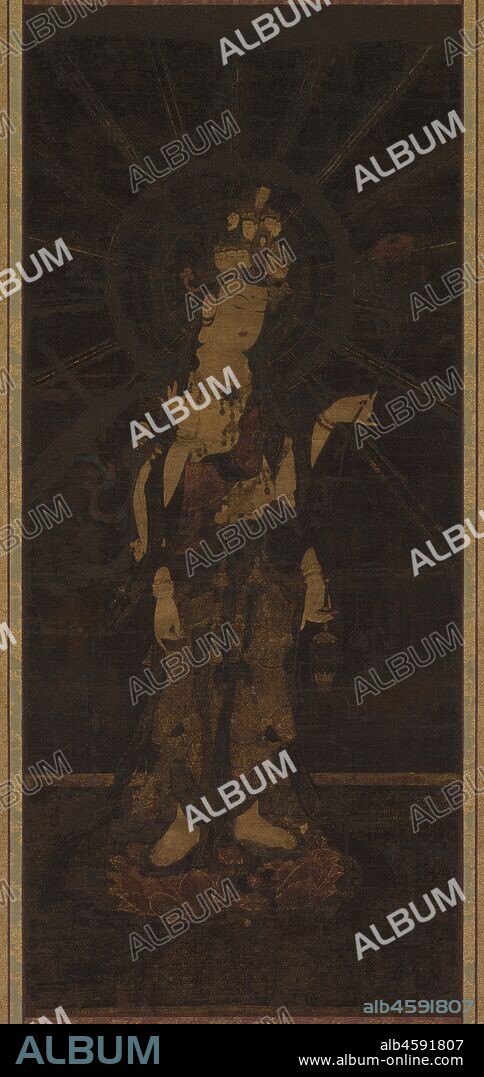alb4591807
Eleven-Headed Deity of Compassion (Juichimen Kannon), 13th century. Creator: Unknown.

|
Zu einem anderen Lightbox hinzufügen |
|
Zu einem anderen Lightbox hinzufügen |



Haben Sie bereits ein Konto? Anmelden
Sie haben kein Konto? Registrieren
Dieses Bild kaufen

Titel:
Eleven-Headed Deity of Compassion (Juichimen Kannon), 13th century. Creator: Unknown.
Untertitel:
Siehe automatische Übersetzung
Eleven-Headed Deity of Compassion (Juichimen Kannon), 13th century. The Eleven-Headed Kannon, a deity of mercy and compassion in the Buddhist pantheon, was introduced into Japan in the 600s. By the 700s it had gained in popularity among an increasing number of believers, a condition it enjoyed until the end of the Kamakura period. The modest size and high quality of the materials apparent in this work indicate its use as a private devotional image. An earlier restoration of this painting included the use of an entire silk backing layer rather than silk patches with a paper backing. The tension that resulted between these two layers of silk, one old and the other recent, caused serious cracking to occur in the painting's surface. Moreover, the silk backing had been dyed a dark tone which did not enhance the appearance of the painting, although it did help hide damaged areas in the surface silk. Now two layers of backing paper support the painting, with its carefully fitted silk patches. These are toned slightly differently from the original surface values so that viewers can distinguish between the original and the modern restored areas. The original metal fittings have also been cleaned and reused. Other replacement fittings were deemed inappropriate for this early religious image and so new, specially designed ones are now in place.
Bildnachweis:
Album / Heritage Art/Heritage Images
Freigaben (Releases):
Model: Nein - Eigentum: Nein
Rechtefragen?
Rechtefragen?
Bildgröße:
3699 x 7829 px | 82.9 MB
Druckgröße:
31.3 x 66.3 cm | 12.3 x 26.1 in (300 dpi)
Schlüsselwörter:
 Pinterest
Pinterest Twitter
Twitter Facebook
Facebook Link kopieren
Link kopieren Email
Email
